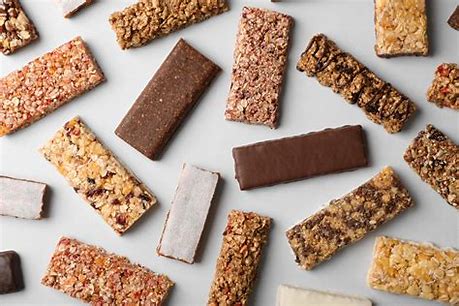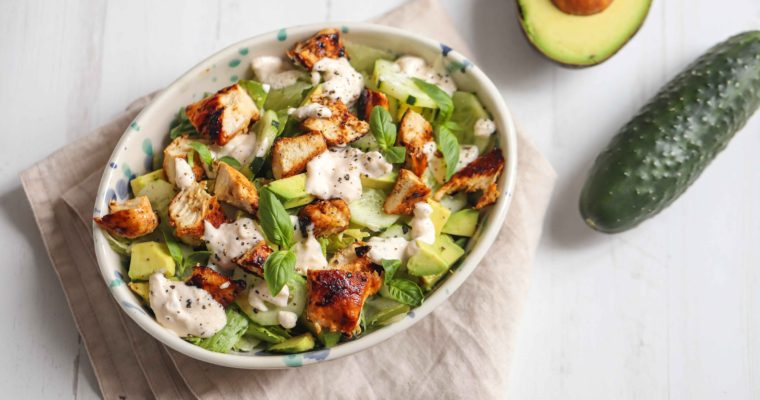Protein Bars
Protein is essential for muscle gain,injury recovery, immune function and can even help reduce body fat when used as part of a balanced diet. However, maintaining a high protein diet is easier said than done.
When it comes to protein bars — sweet treats often in the forms of chocolate bars, brownies, or cookies — hitting your protein goal becomes significantly easier (and tastier). The nutrient composition of protein bars can differ significantly between brands — and even between flavours. This is largely due to their varying ingredients. Many protein bars may be made from dates and fried fruit, nuts and seeds, and whole grains like oats or quinoa. The average protein bar contains 5–10 grams of fat, 25–35 grams of carbs, and 5–10 grams of fibre, ideally you should opt for one that contains under 300kcal.
When examining ingredient labels, be aware that some protein bars use a proprietary blend of ingredients and don’t disclose any of its details on the packaging. Many protein bars also contain high amounts of added sugar and use unhealthy sweeteners like high fructose corn syrup, which adds excess fructose to your diet and can increase your risk of fatty liver, obesity, and diabetes when consumed in high amounts. Generally, most protein bars offer 150–400 calories and 10–20 grams of protein, although some contain closer to 30 grams of protein per serving. The source of protein also varies. Some bars feature yogurt powder, milk, or dairy proteins like casein and whey, while others use plant-based sources like soy, pea, or brown rice. Some contain egg whites, while others rely on nuts and seeds as a primary protein source. Moreover, some protein bars use highly concentrated protein sources like whey or soy protein isolates, instead of less processed, whole food protein options.
Wholegrain oat-blend protein bars are some of the most popular options, as they can provide up to 30 per cent of your RDA for fibre. Most protein bars are also bolstered with between 15 and 20 vitamins and minerals, with a focus on antioxidant vits C and E, which will lessen DOMS.
Are Protein Bars Healthy? What Should I Look For?
One easy way to decipher what’s really inside your protein bar is to look at the ingredients on the reverse of the wrapper. In an ideal world, the majority of ingredients will be natural and, secondly, you’ll be able to recognise them. Think whey protein, nuts, seeds, milk, pea protein (v), soy (v) and egg, for starters. A lot of protein bars, especially in vegan products, contain high amounts of fibre, helping support a healthy gut. However, some protein bars pack a surprisingly high sugar content, which can be delivered in a synthetic form of sugar or sweeteners, such as polydextrose or maltitol.
Are Protein Bars Good for Weight Loss?
If you’re looking to lose weight, protein bars could be both helpful and detrimental. To drop the kilos, you need to burn more calories than you’re consuming. This means you’ll be eating smaller portions and cutting on the snacks. The majority of protein bars sit at around 200kcal with around 22-25g of protein per hit, which, for some guys, is a significant amount of calories for a single serving of protein. A tin of tuna, a chicken breast, two large eggs or a scoop of protein would provide a similar hit of the muscle-builder with less calories. On the flipside, some protein bars are marketed as ‘meal replacement bars’, which can be eaten in place of a full meal, helping you eat less calories at mealtimes.
The Bottom Line
Protein bars are a convenient way to add more protein and other nutrients to your diet. However, not all protein bars are created equal. Some are high in calories and added sugar and use ingredients you may want to avoid. Others may be an appropriate choice to fuel your workout, stabilize your blood sugar between throughout the day, or even start your morning on the go. There are plenty of other ways to get more protein in your diet, but if you choose to eat protein bars, be sure to look at the nutrition panel and ingredient list to help you decide which one is best for your lifestyle.
I’ve provided a table below of some well branded names and a breakdown of Macro’s for each bar.






Very good blog post. I absolutely love this website. Keep writing!
Good post. I certainly appreciate this website. Stick with it!